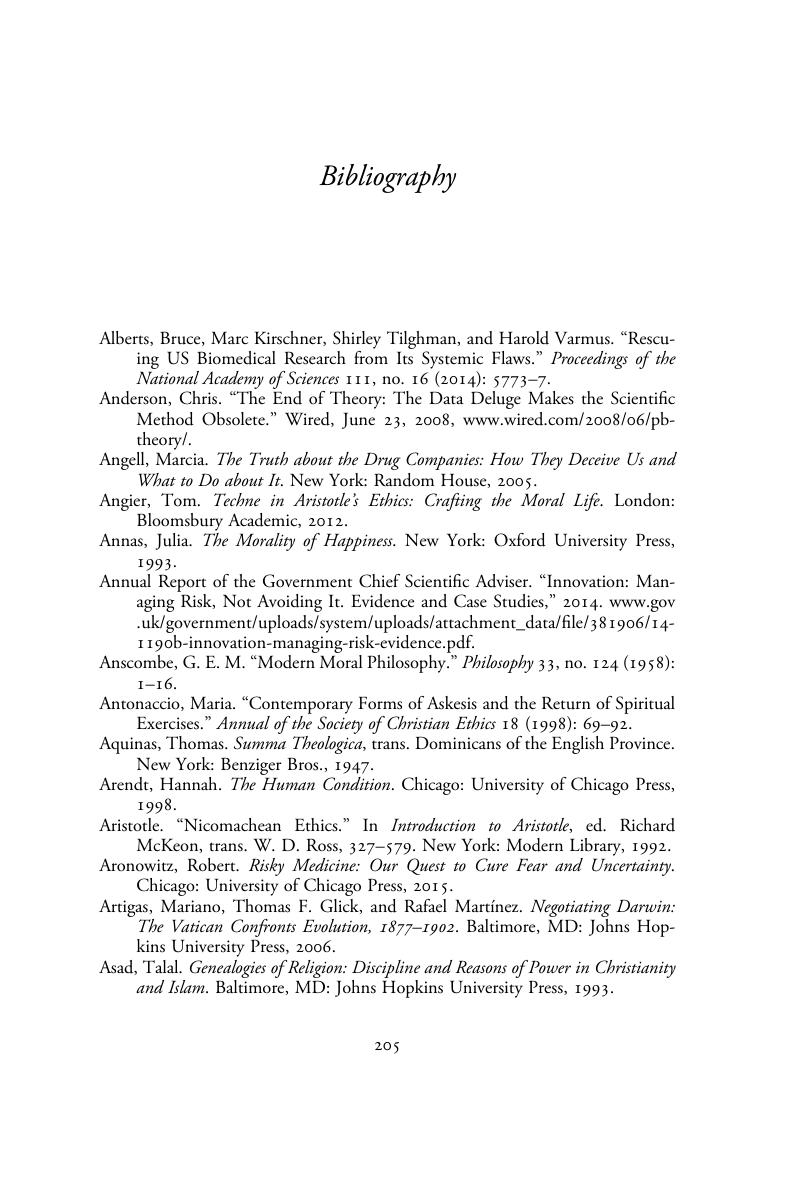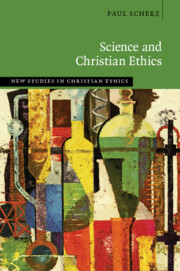Book contents
- Science and Christian Ethics
- New Studies in Christian Ethics
- Science and Christian Ethics
- Copyright page
- Contents
- General Editor’s Preface
- Acknowledgments
- Introduction
- Chapter 1 The Crisis in Science
- Chapter 2 The Scientist Entrepreneur
- Chapter 3 Teleology and the Craft of Science
- Chapter 4 The Practices Shaping the Entrepreneurial Subject
- Chapter 5 Reshaping the Entrepreneurial Subject of Science
- Chapter 6 Acquiring the Virtue of Truth-Speaking in Science
- Chapter 7 Subjectivity, Truth, and Theological Anthropology
- Conclusion
- Bibliography
- Index
- Series page
- References
Bibliography
Published online by Cambridge University Press: 04 May 2019
- Science and Christian Ethics
- New Studies in Christian Ethics
- Science and Christian Ethics
- Copyright page
- Contents
- General Editor’s Preface
- Acknowledgments
- Introduction
- Chapter 1 The Crisis in Science
- Chapter 2 The Scientist Entrepreneur
- Chapter 3 Teleology and the Craft of Science
- Chapter 4 The Practices Shaping the Entrepreneurial Subject
- Chapter 5 Reshaping the Entrepreneurial Subject of Science
- Chapter 6 Acquiring the Virtue of Truth-Speaking in Science
- Chapter 7 Subjectivity, Truth, and Theological Anthropology
- Conclusion
- Bibliography
- Index
- Series page
- References
Summary

- Type
- Chapter
- Information
- Science and Christian Ethics , pp. 205 - 224Publisher: Cambridge University PressPrint publication year: 2019



